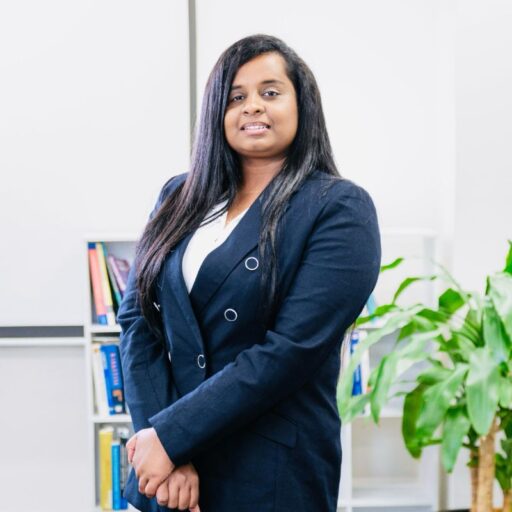PhD in Civil Engineering

Sanduni Jayasinghe is a civil engineer specialising in structural engineering. She obtained her bachelor degree in 2021 in engineering with a First Class Honours, specialised in civil engineering from University of Peradeniya, Sri Lanka and commenced her PhD the next year at RMIT University. Her research is on developing digital twins for real-time structural integrity assessment of civil infrastructure where she integrates artificial intelligence (AI) techniques with finite element modelling (FEM) to address the limitations of running real-time FE models of complex structures and thereby create intelligent structural health monitoring systems.
The project is led by RMIT University and supported by local governments, several universities and industry partners including the Victorian Department of Transport and Planning, Transport of New South Wales, Melbourne Water, Australia Curtin University, Western Sydney University, University of Technology Sydney, Beta International Associates, Upward Technology, Ash Development Association, Lastek, Macdonald Lucas and Bentley.
RMIT University
Dr Mojtaba Mahmoodian
In the publications list, S.C. Jayasinghe refers to my name Sanduni Chathuprabha Jayasinghe.
Digital twin of reinforced concrete infrastructure for intelligent asset management
This study focuses on developing real-time digital twins for bridges, enabling remote monitoring of excessive stresses and strains to support preventive maintenance and avoid failures. The approach involves instrumenting bridges with sensors (strain, deflection, vibration) to capture real-time structural behavior. A finite element model (FEM) is integrated into the digital twin for comprehensive structural health assessment. The proposed framework enhances real-time structural integrity assessment, providing a robust tool for bridge monitoring and maintenance planning.
By undertaking an industry-led research project, I can focus on practical applications rather than just theory. This ensures that my research produces beneficial outputs that can be implemented in the real world, directly addressing industry needs and providing effective solutions to real-world problems.
After completing my PhD, I aim to continue working at the intersection of industry and research. Mostly, I would like to work in the industry and apply my knowledge to the industry. I see myself contributing to structural health monitoring and digital twin development, either through industry collaborations or academic research. I want to apply my expertise to real-world infrastructure challenges, improving bridge maintenance, safety, and predictive monitoring.
My research enhances Australia’s built environment by improving bridge monitoring, maintenance, and safety. The digital twin framework enables real-time structural assessments, reducing maintenance costs and preventing failures. By integrating machine learning techniques, it supports sustainable infrastructure management, extending the lifespan of concrete structures and ensuring safer, more resilient assets.
Notifications